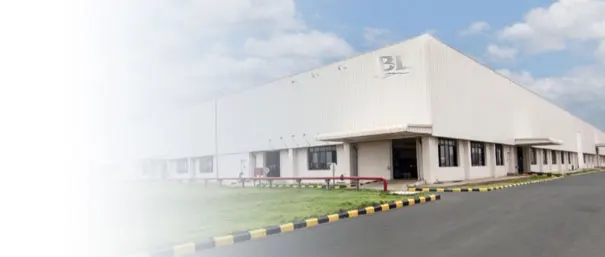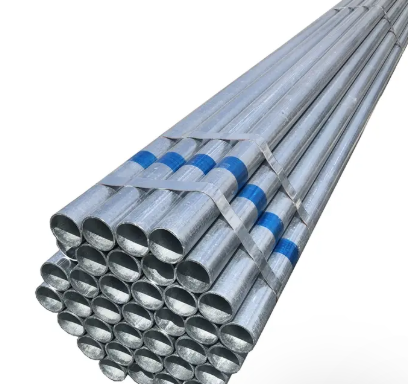In corrosive, abrasive, and UV-intense conditions, piping systems face accelerated degradation that drives up lifecycle costs. Among available options, galvanized steel pipes consistently demonstrate superior longevity, predictable performance, and lower total cost of ownership when engineered and installed correctly. This article explains why hot-dip galvanized (HDG) steel outperforms alternatives in harsh environments, how to size and specify the coating for maximum lifespan, and what QA/QC practices ensure results. It also outlines the manufacturing and service capabilities of BaoLi Iron & Steel Co.,Ltd, a China-based producer delivering customized, standards-compliant galvanized solutions to global projects.


Why Galvanized Steel Excels in Harsh Conditions
Galvanized steel relies on a metallurgically bonded zinc coating that protects the underlying steel via barrier action and sacrificial cathodic protection. In abrasive or saline environments, zinc preferentially corrodes, preserving wall thickness and structural integrity. The hot-dip process forms a series of intermetallic layers (Gamma, Delta, Zeta) topped by a relatively pure zinc Eta layer, combining hardness for abrasion resistance with electrochemical protection. This dual mechanism allows galvanized pipes to outperform painted carbon steel, polymer-lined pipes subject to mechanical damage, and some stainless grades in chloride-laden atmospheres where pitting risk is high.
In industrial plants, coastal infrastructure, mining slurry lines, agricultural irrigation with fertilizer carryover, and desert installations with high UV exposure, HDG pipes maintain a stable protective system with minimal maintenance. Properly specified coating thickness and adherence to recognized standards (e.g., ASTM A123/A153, ISO 1461, EN ISO 1461) directly correlate with service life, often exceeding multiple decades before first maintenance.
Comparing Materials: Galvanized Steel vs. Alternatives
- Painted carbon steel: Low initial cost but higher lifecycle cost due to coating holidays, underfilm corrosion, frequent recoating, and vulnerability to impact damage.
- Stainless steels (e.g., 304/316): Excellent corrosion resistance in many environments but susceptible to chloride-induced pitting/crevice attack; higher material cost and potential for stress corrosion cracking in hot, salty, or acidic conditions.
- Plastics/FRP: Good chemical resistance and low weight, but limited pressure/temperature capabilities, UV aging, creep under sustained loads, and sensitivity to abrasion.
- Galvanized steel: Balanced mechanical strength, pressure/temperature tolerance, abrasion resistance, and sacrificial corrosion protection; predictable service life modeling and broad standards support.
For systems where impact, sand entrainment, or cyclic temperature loads are expected, galvanized steel pipes provide a robust envelope that minimizes unplanned downtime. This is especially true when procurement specifies proper base steel grade, coating mass, and post-galvanizing inspection criteria.
Service Life Modeling by Environment
The longevity of galvanized pipes is linked to zinc consumption rate, which varies with atmospheric category and immersion conditions. The following indicative ranges help guide design; project-specific testing is recommended:
| Environment | Typical Corrosivity | Suggested Coating Mass (Total Both Sides) | Indicative Service Life to First Maintenance |
|---|---|---|---|
| Rural/Low pollution atmosphere | Low | ≥ 360 g/m² (≈50–70 μm) | 30–60+ years |
| Urban/Industrial | Moderate | ≥ 450 g/m² (≈70–85 μm) | 20–40 years |
| Coastal/Marine splash | High | ≥ 600 g/m² (≈85–100 μm) | 10–25 years |
| Immersed/Soil contact | Variable | ≥ 600–1000 g/m² (site-specific) | 5–25 years (design dependent) |
Note: Values are typical guidance derived from international practice; confirm with ISO 9223/9224 corrosivity classification and local exposure data.
Key Specification Points for Maximum Lifespan
- Base steel selection: Choose steel grades with appropriate tensile strength, weldability, and chemistry compatible with galvanizing (controlled Si and P to manage coating growth).
- Coating thickness: Specify by mass per unit area or microns in line with standards. Thicker coatings are recommended for coastal, industrial, or abrasive duties.
- Surface preparation: Ensure blast or chemical cleaning achieves near-white metal where required; cleanliness drives coating adhesion and uniformity.
- Drainage/venting: Design pipe and fabrications with proper vent holes to avoid entrapment and ensure full zinc flow during hot dipping.
- Threading and cut ends: Protect with zinc-rich coatings or re-galvanizing treatments; specify thread tolerances for tight sealing under cyclic loads.
- Inspection: Use magnetic or electronic thickness gauges and adhesion tests; verify continuity, especially on weld zones and flanges.
Hydraulic and Mechanical Considerations
Beyond corrosion control, system performance depends on internal surface condition, wall thickness, and joint integrity. Galvanized steel maintains a relatively smooth bore and resists erosion compared to soft liners. Designers should check pressure rating per pipe schedule, temperature limits of zinc (avoid continuous exposure above approximately 200°C for long durations), and compatibility with transported media. Zinc is amphoteric; extreme pH (12) can accelerate attack, so liners or alternative alloys may be considered in those extremes.
| Parameter | Typical Range / Guidance | Design Note |
|---|---|---|
| Operating temperature | -40°C to ~200°C (continuous) | Limit long-term >200°C to prevent zinc softening/peeling. |
| Operating pressure | Per size/schedule; verify with design code | Check hoop stress and joint factors for surge loads. |
| Media pH | 5–12 preferred | Outside range, consider internal lining or alternate material. |
| Abrasive solids | Low–moderate tolerated | Use thicker walls and smooth-radius bends to reduce wear. |
Installation and Maintenance Best Practices
- Handling: Use soft slings and padded supports to avoid impact on coating; store off the ground with spacers for air circulation.
- Jointing: Apply compatible thread sealants; avoid aggressive pipe dopes with high acidity; for flanged systems, use gaskets that do not trap moisture.
- Touch-up: Immediately treat field cuts, welds, and scratches using zinc-rich repair compounds per ISO 1461 or ASTM A780.
- Inspection intervals: Visual checks every 12–24 months; measure residual coating thickness in representative zones to predict maintenance windows.
When Galvanized Steel Outperforms
Use galvanized steel pipes when projects demand strong mechanical performance, predictable corrosion protection, and reliability under variable climates. Examples include coastal building risers, fire protection lines, agricultural irrigation mains, off-grid water transfer in desert environments, mining process lines with intermittent solids, and infrastructure exposed to road salts. In each scenario, a properly selected coating mass ensures the zinc continues to sacrificially protect steel even after minor surface damage.
About BaoLi Iron & Steel Co.,Ltd: Manufacturing Strength and Service
BaoLi Iron & Steel Co.,Ltd is a leading China-based steel manufacturer supplying galvanized steel, stainless steel, and carbon steel products worldwide. Our core advantage lies in customization: we tailor pipe sizes, wall thickness, coating mass, and thread/flange configurations to project requirements. With rigorous quality control and experienced engineers, we help customers select the right coating and steel grade for environmental exposure, achieving a “100% customer satisfaction” objective through reliable delivery and technical support.
For specifications, data sheets, and available dimensions, explore our product pages for galvanized pipes. We provide end-to-end services—from production and inspection to logistics and contract management—so you can deploy robust piping systems with confidence and minimal lifecycle cost.
Learn more about our galvanized offerings:
galvanized steel pipes
and
galvanized steel pipe category.
Procurement Checklist for Harsh Environments
- Applicable standard (ASTM A53/A106 base, ISO 1461/ASTM A123 coating).
- Specified coating thickness or mass per environment.
- Thread type, flange class, and end protection for transport.
- Inspection plan: thickness mapping, adhesion, continuity tests.
- Field repair materials for cuts, welds, and handling marks.
- Documentation: mill test certificates, coating reports, traceability.
Case Insight: Coastal Utility Upgrade
A coastal utility replaced aging painted carbon steel mains with hot-dip galvanized steel pipes specified at ≥85 μm coating. After five years of operation in a high-chloride, wind-driven spray zone, inspections showed minimal zinc loss and no base metal exposure at cut ends, thanks to diligent field touch-up and robust drainage design. Pump downtime and maintenance recoating tasks were significantly reduced, improving total asset reliability while lowering operating costs.
Sustainability and Lifecycle Benefits
Extending service life directly reduces resource consumption and emissions over a system’s lifetime. Galvanized steel’s durability decreases replacement frequency and maintenance trips. Zinc is recyclable, and the steel substrate fits within established recycling streams. When evaluated through a lifecycle lens, galvanized pipes provide strong sustainability value where reliability and long intervals between interventions are paramount.
Conclusion
In harsh environments, hot-dip galvanized steel pipes deliver a rare combination of structural strength, sacrificial corrosion protection, abrasion resistance, and standards-backed predictability. By aligning coating thickness with environmental exposure and enforcing strict QA/QC, asset owners can achieve decades of reliable service with low lifecycle cost. BaoLi Iron & Steel Co.,Ltd supports this outcome with customized manufacturing, expert technical guidance, and global delivery—helping you maximize lifespan and outperform alternatives where conditions are toughest.
Key Specifications
- Standards and grades
- Dimensions and tolerances
- Surface finish
- Certificates (MTC)
Applications
Construction, machinery, energy and general fabrication — match material and finish to the operating environment.



